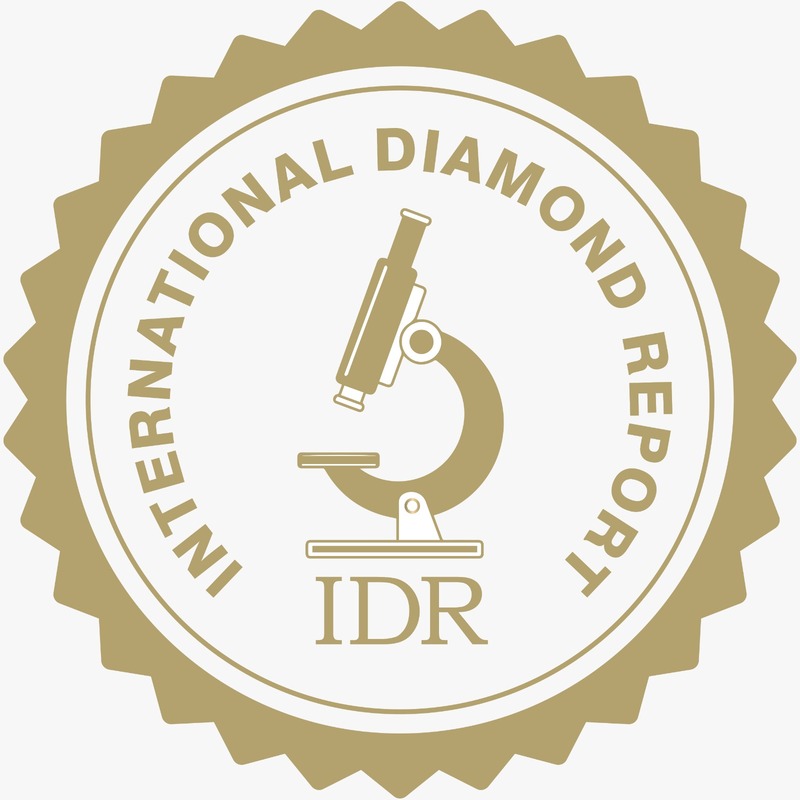D-Z COLORED DIAMONDS
Most diamonds range in color from colorless to slightly yellow. The color grade is determined by comparison with a series of master stones - the rarest and most expensive are diamonds in the colorless range graded D,E and F on a scale that descends to Z.
|
IDR assigns a color grade for diamonds in the D-Z range with the diamond face-down and viewed through the pavilion. This is because size, shape, cut quality and the presence of fluorescence can influence visible face-up color.
In fact, lighting, mounting choice and even the clothes one wears have an impact on color, so IDR uses the most neutral environment possible to ensure accurate and consistent results. |
How does the IDR Grade the Color of Diamonds?
What the IDR does is to grade the degree of colorlessness of the diamond. Since the degree of colorlessness is practically impossible to distinguish by the naked eye, master-stones are used for comparison.
The master-stones are placed in a row on a color paper facing down from D to Z. Since there can be a small range of qualities within a color grade, the master-stones show the "worst" of a certain grade.
Then, the gemologist will place the subject diamond in between two diamonds and see if it is better or worse than the diamonds that surround it and according to that he will move it up or down the scale until he reaches the point where the diamond on the left is better than it and the one on the right is worse – that place will mark the color grade as the diamond on the right (remember that the one on the left represents the worst of its kind).
The comparison is done under special neutral lighting in order not to affect the color and is also repeated by several gemologists that are unaware of each other's grading's.
What the IDR does is to grade the degree of colorlessness of the diamond. Since the degree of colorlessness is practically impossible to distinguish by the naked eye, master-stones are used for comparison.
The master-stones are placed in a row on a color paper facing down from D to Z. Since there can be a small range of qualities within a color grade, the master-stones show the "worst" of a certain grade.
Then, the gemologist will place the subject diamond in between two diamonds and see if it is better or worse than the diamonds that surround it and according to that he will move it up or down the scale until he reaches the point where the diamond on the left is better than it and the one on the right is worse – that place will mark the color grade as the diamond on the right (remember that the one on the left represents the worst of its kind).
The comparison is done under special neutral lighting in order not to affect the color and is also repeated by several gemologists that are unaware of each other's grading's.
FANCY COLOR
Diamonds with more color than Z, or in other shades such as orange, pink, blue, etc. are classified as "Fancy Colored Diamonds" and are graded on the Colored IDR.
The "basic" natural fancy colors are: black, white opalescent, gray, brown, yellow, orange, lime, green, blue, purple, and pink. Red, exists, but is infinitely rare. These colors can also be described in combination.
A color’s "strength" is identified in a saturation-tone grade: light, dark, intense, deep, or vivid. Sometimes, a single, generic color without a prefix is used to describe a diamond’s color outcome
When grading fancy colors, reference master stones are used, and the final color grade is always given by consensus of several experienced gemologists. Color definition is, in the end, subjective, but a gemologist is a trained professional who, like a doctor, assesses the results of his examinations, and describes the color in a disciplined and consistent way.
The "basic" natural fancy colors are: black, white opalescent, gray, brown, yellow, orange, lime, green, blue, purple, and pink. Red, exists, but is infinitely rare. These colors can also be described in combination.
A color’s "strength" is identified in a saturation-tone grade: light, dark, intense, deep, or vivid. Sometimes, a single, generic color without a prefix is used to describe a diamond’s color outcome
When grading fancy colors, reference master stones are used, and the final color grade is always given by consensus of several experienced gemologists. Color definition is, in the end, subjective, but a gemologist is a trained professional who, like a doctor, assesses the results of his examinations, and describes the color in a disciplined and consistent way.
© IDR ( INTERNATIONAL DIAMOND REPORT ) 2021


